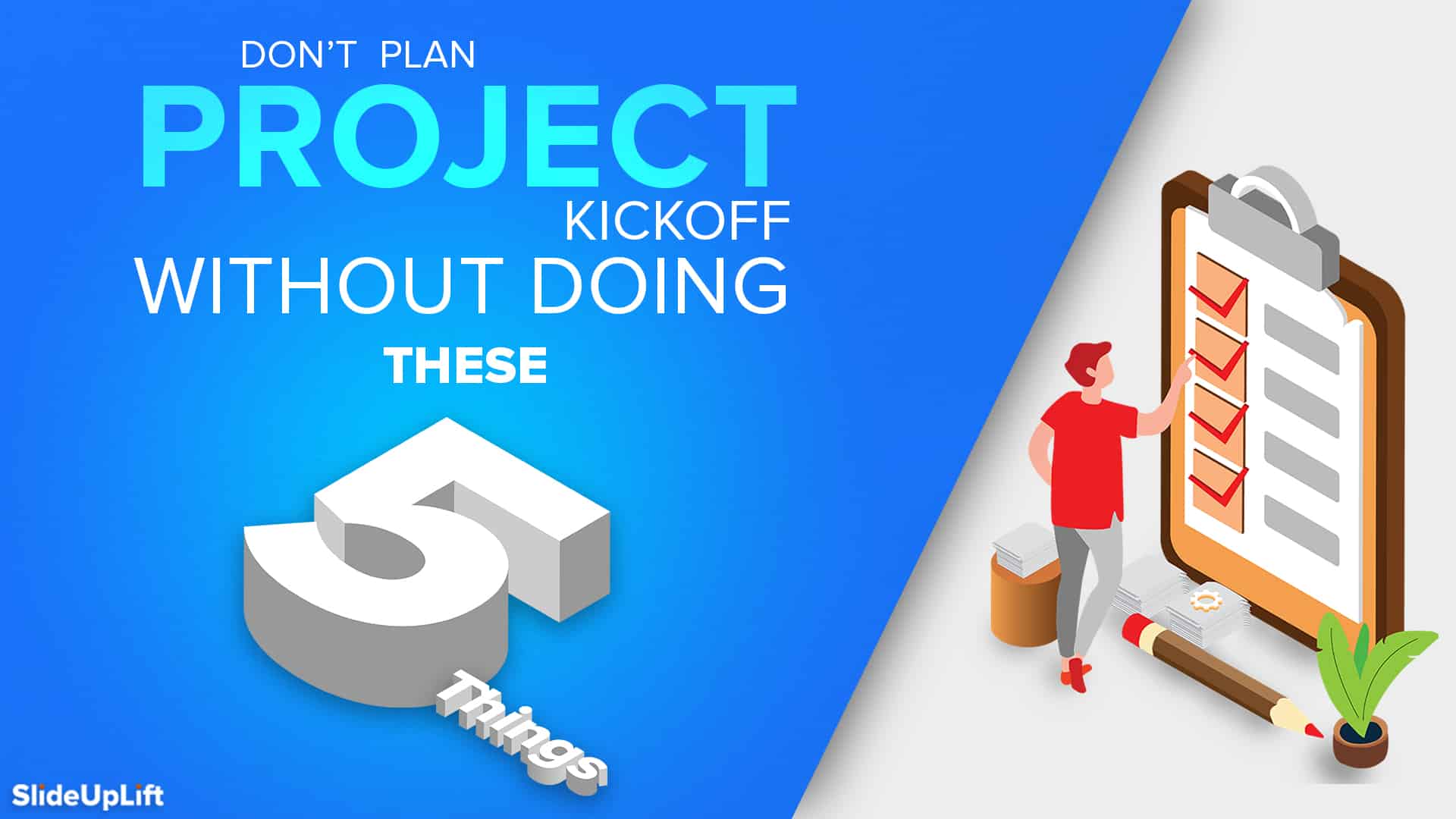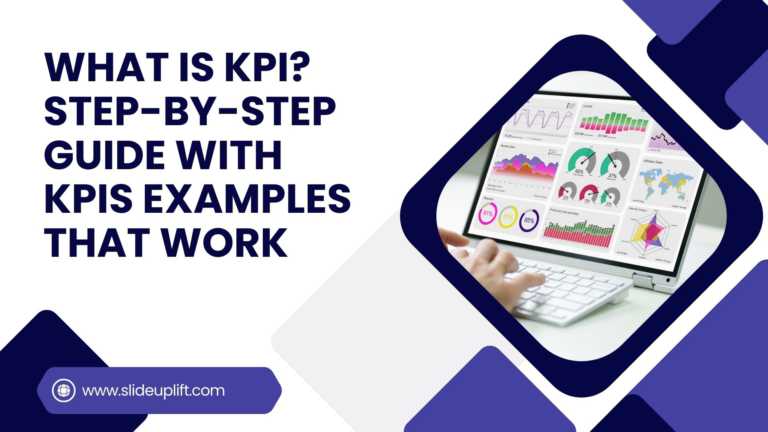Best Work Plan Templates For Easy Task Organization [With Examples]
A project’s success depends on having a detailed task plan. How can you perform tasks without having a plan for them? You and your team can produce the ideal work plan with the assistance of a perfect work plan template. Organizations can determine the success or failure of a project by having a detailed plan for all tasks. Work-hacking tricks and advice will only help if you put in the essential hours at the beginning by making a work plan in advance.
You need a comprehensive plan to ensure your project succeeds and achieves the desired results. This detailed guide will help you through the creation of a work plan and its benefits, along with work plan examples.
What is a Work Plan?
Before jumping into the details of how to make a work plan template, let’s first see what is a work plan. It is a document that facilitates more transparent communication between all project participants. A well-crafted work plan outlines the necessary actions to finish a job. It clearly states the intended result, main work streams, and deliverables needed. It also draws attention to dependencies and resources that are required.

A comprehensive plan may require meetings between key stakeholders and sponsors in the early phases. The first step is to set a goal and identify some strategic concepts. It will assist in clarifying scope restrictions, identify some of the more significant strategic considerations, and facilitate the development of a broad general outline.
Important stakeholders should review and revise a work plan template before the start of the project. It will take some time, but you’ll have a well-defined plan with everyone’s support when it’s finished.
Benefits of Using Work Plan Template
Now that you know what is a work plan let us see some benefits of using them. Consider the following advantages of using these templates for better work planning:
1. Increases Output
With the help of a work plan, you can progress steadily toward your objective by concentrating on finishing each task individually. You can allow enough time for each assignment by organizing your work. In addition, you can tackle your duties according to priority and prioritize them.
2. Enhances work-life balance.
Working wisely, instead of non-stop hustle, makes you effective. A work plan template helps you allocate your work in a way that makes sense for working hours and breaks, and it occasionally offers off time when available. Including downtime in your work schedule allows you to refuel and increase productivity. You can organize your working hours and leave plenty of time for leisure.
3. Keeps you motivated
It outlines an objective and the necessary steps to complete the work. You can track your progress and work towards reaching your weekly goal when you prioritize your duties and allot enough time for each one. The structure for defining goals can help with motivation, which is necessary for effectiveness and productivity.
4. Improves consistent workflow
Moving from a finished activity to a new one is simple without wasting time when you plan your work, and a work plan template helps to achieve it. A consistent workflow guarantees productive outcomes and keeps the atmosphere focused. Knowing what to do after finishing a task enables you to maintain momentum.
5. Teaches you how to set priorities
Planning your job with the help of a work plan template teaches you to prioritize important tasks over less important ones. Knowing how to create priorities is essential for an effective worker since it keeps you motivated to accomplish your objectives. Planning your job can help you keep your attention on meeting deadlines and finishing critical tasks, leaving spare time for fun pursuits.
6. Lets you manage your time
You can efficiently manage your time when you plan your tasks. An effective workplan template identifies the tasks you must complete and the time allotted to them. Think about scheduling some free time. Taking occasional time off is essential. An effective worker understands the value of time management since it increases productivity and self-control.
What to include in a Work Plan?
Now that you understand the purpose of a work plan and its benefits, let us see what information should be included in your work plan template:

1. Objectives
You must first clearly define the purpose of your project. By putting your primary objectives down in writing, you have a concrete document that you can always refer to and make sure your project stays on track with your objectives. Try to provide the background information about your goals and motivations.
2. Measurable Goals
After fully grasping your ultimate purpose, you must divide it into more manageable, smaller goals. It would be best if you considered SMART Goals in your work plan template:
- Try to consider more precise goals.
- Determine what can be measured.
- Be specific about what you can accomplish.
- Consider the elements that are pertinent to your company.
- Recognize what you can achieve within the project’s time limit.
3. Techniques & Plans
It summarizes the steps you intend to take to accomplish the goals. The general goals of the project or campaign are the strategy, and the particular actions you will take to achieve those goals are the tactics.
For Example:
- Expanding your retail business is your aim.
- Your quantifiable goal might be to boost a particular product’s sales by 30%.
- One tactic you might use is boosting website traffic to attract more users.
- You plan to increase your internet visibility using PPC advertisements and SEO techniques.
4. Benchmarks
Ensure you are clear about any important deadlines you have set for yourself on the job. It will assist you in gauging the campaign’s effectiveness and the amount of effort still required.
5. Resources
You must assign precise duties using your workplan templates. Here, you can also outline the decision-making hierarchy and incorporate contingency planning. Consider who will oversee the project, for instance, if someone needs to take paid time off. This part helps you determine when you need to bring in more resources. There can be crucial project components where you must hire temporary staff to help manage the workload or collaborate with outside contractors to bring in more experience.
6. Budget Plan
Include a budget plan in your work plan template. Ensure you understand each project component’s approximate cost. As soon as expenses are confirmed, update your plan. Some project sections may be more affordable than initially thought so you might use the extra money for another component. You must be ready to manage your budget to demonstrate that you are getting a good return on your investment.
Types of Work Plan Templates
Understanding different work plan examples or plans helps the organization excel in various departments. Every work schedule will be unique according to other departments. They differ according to the kind of project, the number of participants, and the individuals who will use the plan daily.
Although it is difficult to classify these techniques due to their nature, we can identify three primary sorts:
1. Work Plan Example for Corporate Employees
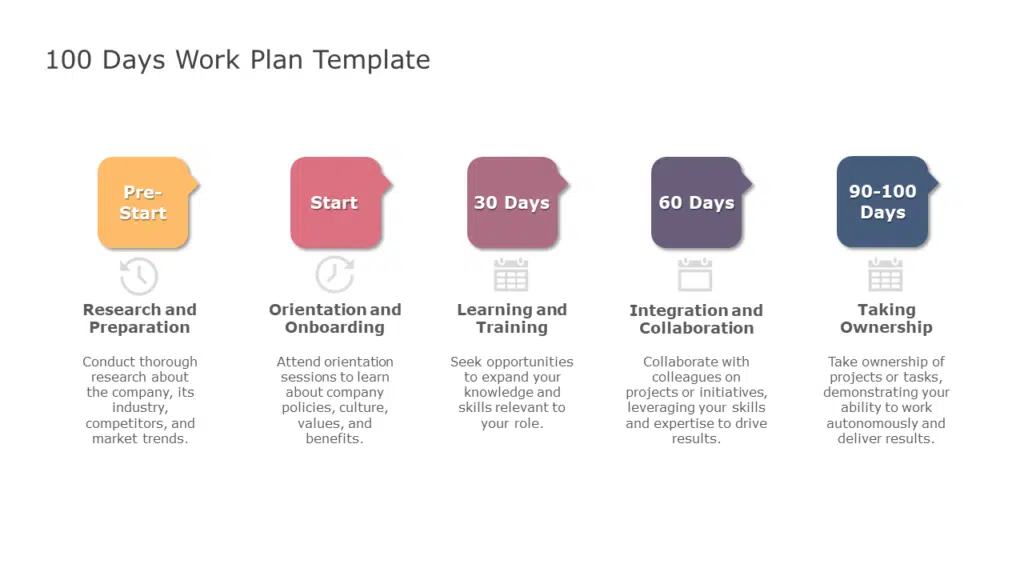
These plans are more limited in scope and concentrate on straightforward departmental projects. Their purpose is to assist your team in achieving its objectives, which will eliminate the need for permission from higher management. These little tasks typically come under your manager or department leader’s responsibility.
A work plan for an employee comprises the following:
- Project objectives
- A spending plan
- Supplies and costs needed for the project
- Due dates and the anticipated completion date.
2. Work Plan Example For Business Owners
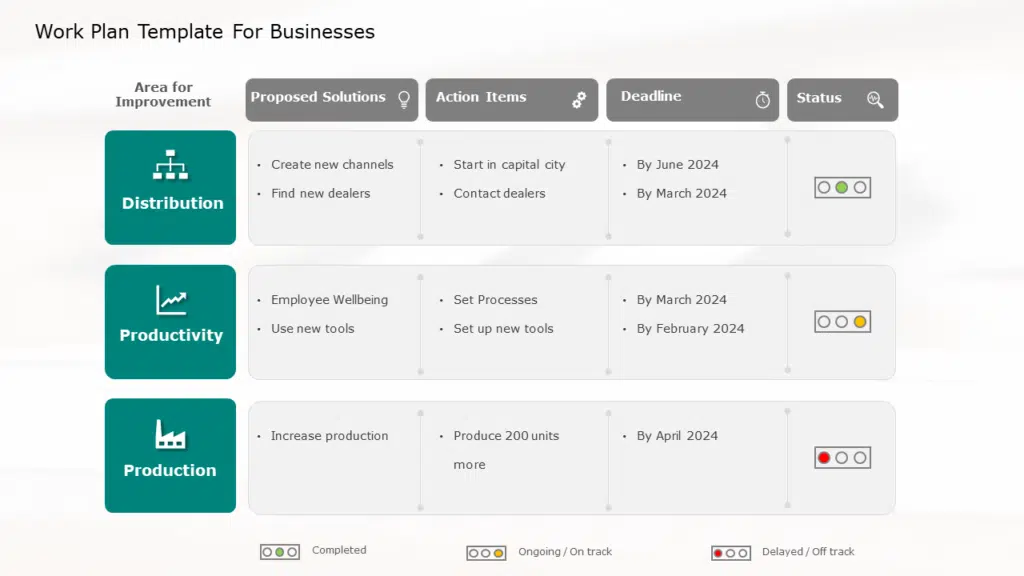
Business owners require a comprehensive plan to effectively manage various aspects of their enterprises. This work plan template helps with the following:
- Guides business owners in managing multiple aspects of their enterprises.
- It includes financial goals, marketing strategies, operational tasks, and growth projections.
- Help focuses on maximizing profitability and sustainable growth.
- Provides a strategic roadmap for achieving long-term success.
- It helps business owners track progress, make informed decisions, and adapt to changing market conditions.
3. Work Plan Example for Project Managers
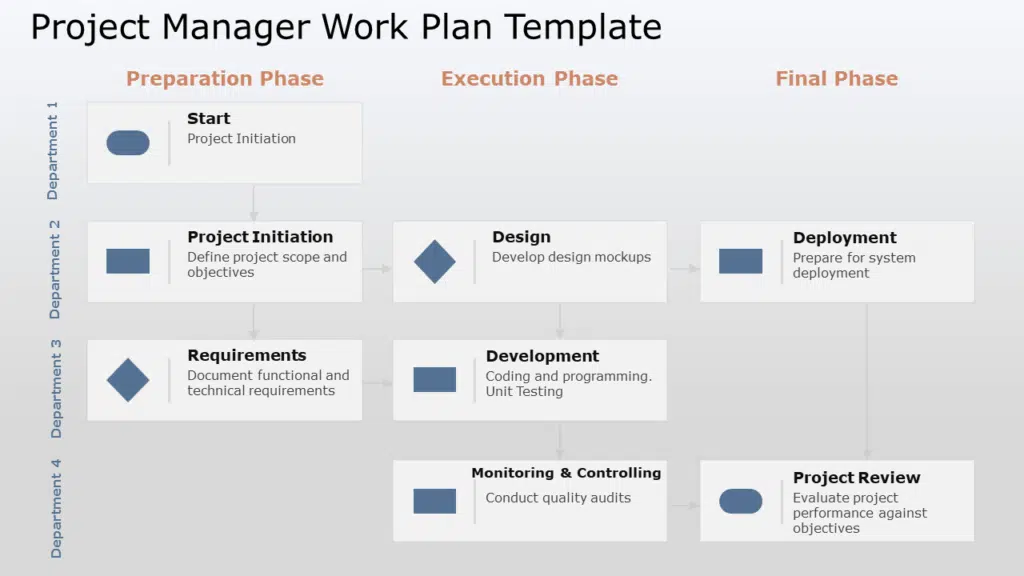
Larger projects are better suited for managers. They involve long-term objectives and plans and need assistance from other departments. Typically, these initiatives have:
- The anticipated effect on the business
- Thorough risk evaluations
- Detailed cost estimates and budgets.
These plans are large and complicated. Thus, getting permission from higher-ups is usually necessary.
How to Create A Work Plan?
You should follow these six steps while making a work plan template:
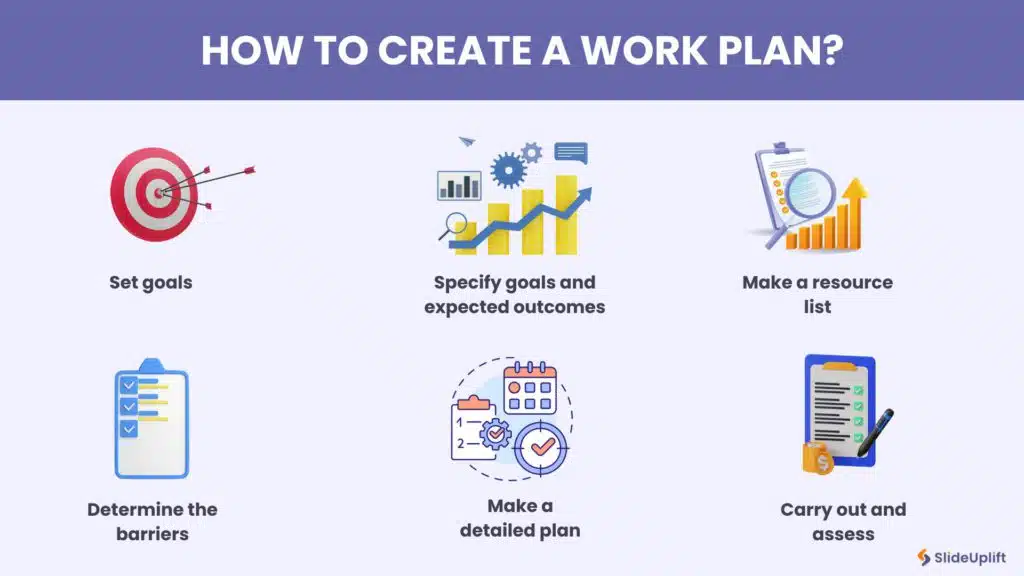
Step 1: Set Goals
Every project needs a vision; you can’t waste time explaining the “how” if you haven’t determined the “why.” Establish some challenging yet attainable objectives for your project; these will direct all future actions and inspire your group to carry out the strategy.
You must develop these objectives while considering the company’s overarching vision. After all, even if the project is successful by your standards, it will be viewed as a failure by business leadership if your objectives disagree with the organization’s broader strategy.
The most significant error in goal-setting is imprecise language, such as “increase our brand awareness.” How would you determine if you’ve succeeded in your mission? Instead, if it’s feasible, create a target with specific statistics, such as “increase referrals by 20% by the end of the third quarter.”
Step 2: Specify goals and expected outcomes
Once you have established the goals, it’s necessary to specify the kinds of deliverables and targets in your work plan template. For instance, “contact 100 customers per week for referrals” or “launch a reward program” would be appropriate goals if you aimed to boost referrals by 20% over the following quarter.
These deliverables are the steps you’ll take to fulfill the more general objectives you previously established. Remember to give each goal a deadline. Set up prizes for your squad to receive when they meet goals. These rewards will increase output and foster a sense of appreciation among your staff. For example, please give them a monetary bonus or an extra day off.
If goals differ much, many work plans separate them into short, middle, and long-term goals. For instance, a company’s long-term objective to improve brand visibility in social media channels over the next year may differ significantly from its short-term goal of increasing viewership by 30% in three months.
Step 3: Make a resource list
It’s time to determine what resources you’ll need to understand your goals and how to attain them. If your goals are the engine and your objectives are the destination, then your resources are the fuel that powers your journey.
Although finance comes to mind when someone mentions resources, the term encompasses labor, space, materials, equipment, and equipment. It is everything that has a finite amount and can be depleted by a project. Please list every resource you can think of and include it with each goal.
Have your team brainstorm the resources that you will need. If you attempt to do it yourself, you’ll likely overlook a few items to list. Talking with the team will help them identify a few more resources the project will require.
Step 4: Determine the barriers
In addition to identifying potential roadblocks that might keep the project from succeeding, you must also factor in some space for unexpected difficulties in your work plan template. A corporation attempting to boost referrals by 20% can encounter challenges, such as lower-than-expected incentive program registration.
Alternatively, an unanticipated circumstance can compel your organization to reallocate human capital resources from your project. A quick idea is to prepare a backup plan for every scenario. For instance, if the rewards program is failing, you should have recognized a few other strategies for boosting referrals that you may redirect resources to immediately.
Step 5: Make a detailed plan
Now that you have everything you need to make a detailed plan and project schedule to put everything together. You outlined the deliverables in the second phase, but now you must dissect them into smaller steps.
When creating a rewards program, some steps you might take to reach that goal would be surveying current members to find out what kind of rewards they would be most interested in. You begin by investigating the worth of a referral to ascertain the amount to allocate for each incentive, establishing a framework for the scheme, crafting a webpage for the rewards system, and so forth.
Assign team members roles and duties for every task in the work plan. If you don’t do this, the project may get delayed since no one will know who will finish a phase—preventing some team members from doing most of the work. In contrast, others might contribute little to workload management.
Step 6: Start and analyze
Proceed and start the work plan template. After the project begins, make sure to assess its progress regularly. For a six-month project, this could mean once a week. You will likely encounter a few problems that require changing the work strategy. That’s what the fourth step was for.
Use the backup plan if you encounter one of the mentioned difficulties, and modify it as necessary. You should be adaptable enough to accomplish this if you’ve completed the proper project preparation.
Track projects and evaluate their performance with software. Since gathering all the required data by hand is tricky, use one of the many effective software programs available to collect data. It will allow you to develop an extensive report that will provide you with insightful information. It also helps you manage projects remotely.
How to Present a Work Plan?
Until now, we have covered work plan examples, benefits, templates, and how to create one. However, it’s also vital to understand how to present it effectively. You can use a video or PowerPoint presentation to present your plan. You can show your work plan template in PowerPoint using various shapes, tables, and animations. Here is how to effectively present it:
Understand Your Audience: Before delivering the work plan, ascertain the intended audience. Adjust the presentation to suit your audience’s expectations, interests, and degree of experience.
Organize Your Presentation: Start by outlining the goal and parameters. A rational framework, such as an agenda, can guide the presentation. Divide the material into manageable chunks and cover essential topics such as goals, assignments, due dates, resources, and completion dates.
Focus on Main Takeaways: Emphasize the most essential elements, such as the deliverables, milestones, and project goals. Make sure that everyone understands the plan’s benefits and anticipated results. Emphasize how the plan satisfies the needs and concerns of stakeholders while also being in line with organizational goals.
Best Work Plan Templates
Below, we have discussed the best work plan examples or templates that you can use:
1. Day Planning Timeline Template
The Day Planning PowerPoint Template illustrates your hourly schedule and tasks within event planning or day organization processes. This template includes a Gantt Chart slide, enabling you to designate various tasks with distinct colors scheduled at different hours throughout the day.
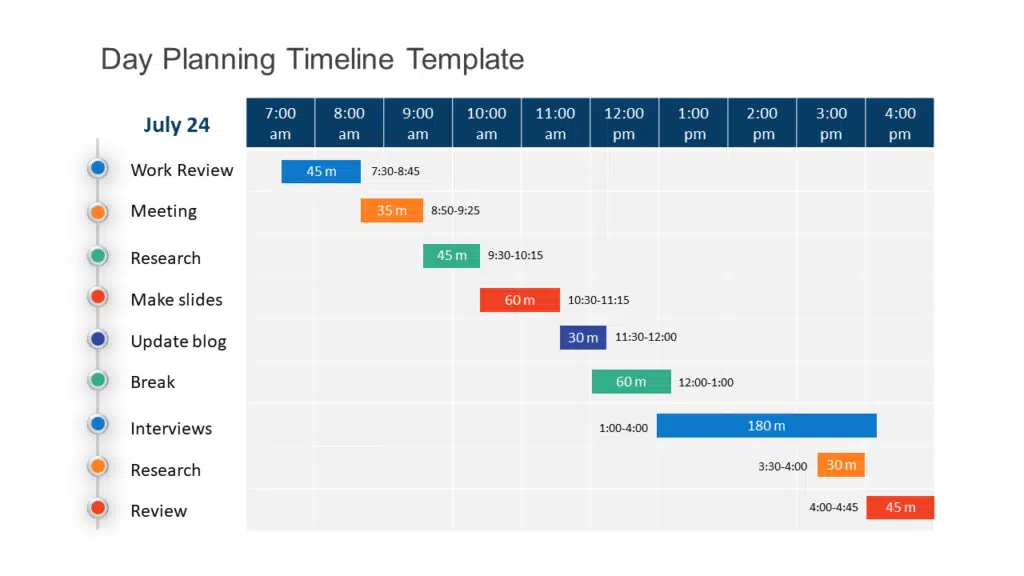
Additionally, you can specify the allocated time for each task and its anticipated completion time. This versatile PowerPoint template showcases planning efforts for workshops, orientation meetings, project schedules, or any other day-long event.
2. Weekly Induction Training Calendar Work Plan Example
The Induction Training Calendar PowerPoint Template is a comprehensive weekly work plan template to streamline pre-onboarding. It presents a detailed schedule spanning four weeks, with each week meticulously organized into five days of activities.

Within this template, there’s ample space allocated for outlining the specific activities planned for each day, ensuring clarity and coherence in the training program. This template aims to enhance the efficiency and effectiveness of induction training by providing a structured framework for planning and execution.
3. Weekly Task Planner Gantt Chart
The Task Planner Gantt Chart PowerPoint Template facilitates weekly scheduling, offering a comprehensive overview of seven-day tasks. With the flexibility to accommodate up to nine daily functions, this template empowers users to efficiently organize and manage their workload.

Whether for personal productivity or professional project management, this template provides a user-friendly interface for outlining tasks and tracking progress throughout the week. It is an editable template that is also available on Google Slides.
4. Yearly Work Plan Template
This template is a comprehensive tool that outlines tasks and activities for an entire year. It Features a slider-like structure; this template offers a visual representation of progress, with orange indicating completed days and white denoting remaining days.
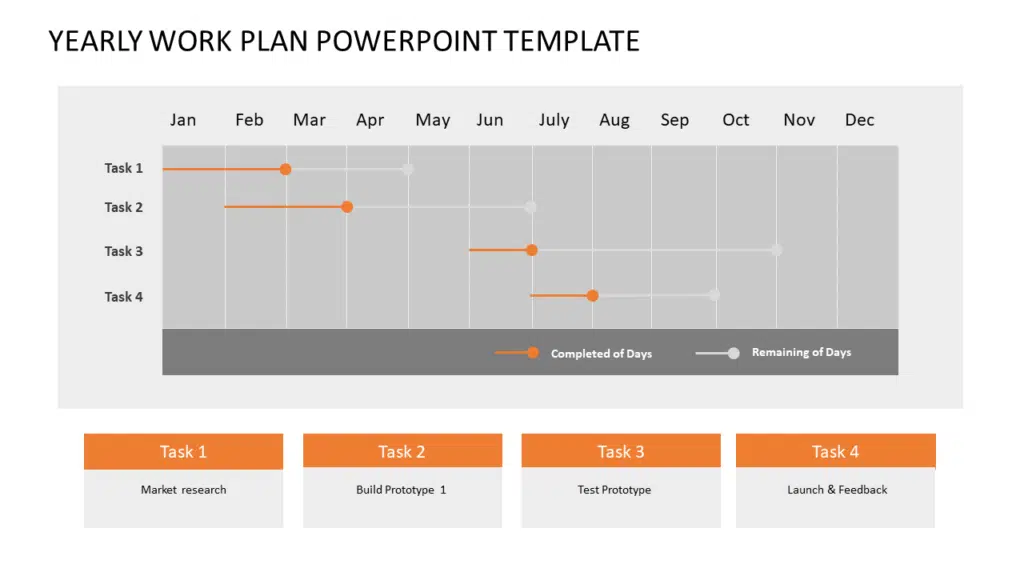
With space allocated for up to four tasks, users can efficiently plan and track their work throughout the year. Moreover, this template is available in Google Slides, ensuring accessibility and convenience for users across various platforms.
5. Work Status Timeline PowerPoint Template
The Work Status Timeline PowerPoint Template is a dynamic tool designed to track the work progress of up to four employees over a span of six months.
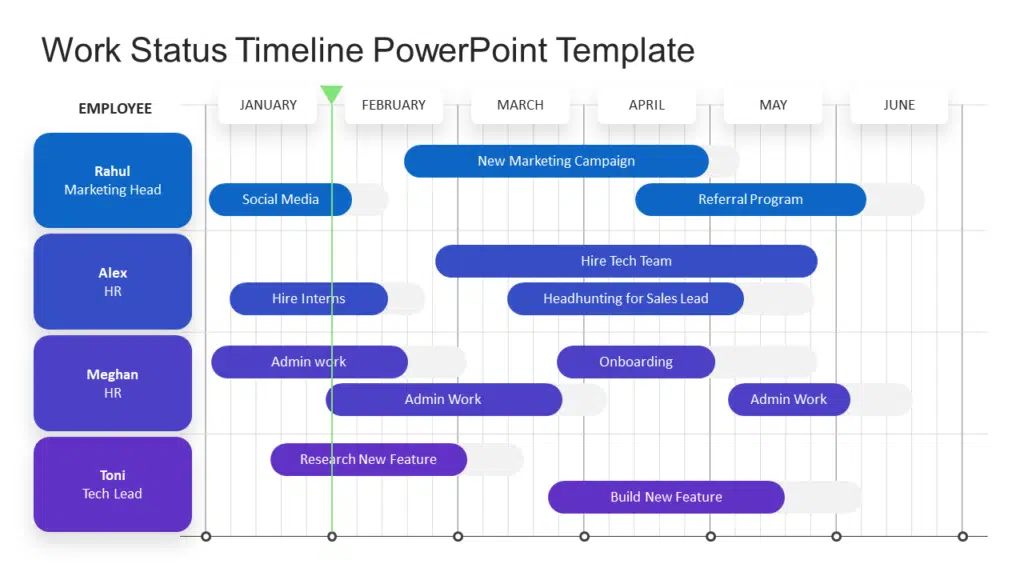
It features a user-friendly layout; the leftmost column includes employee names along with their respective positions. The template provides dedicated space to display the work status of each employee, facilitating clear communication and efficient monitoring of tasks and projects.
6. 30 60 90 Day Planning
The 30-60-90-Day Work Plan Template is a visually engaging tool for presenting comprehensive plans for the initial three months of employment. It has three horizontal panes catering to various roles, including new managers, new hires, team leaders, sales managers, and others, allowing them to delineate their goals and objectives for each period.
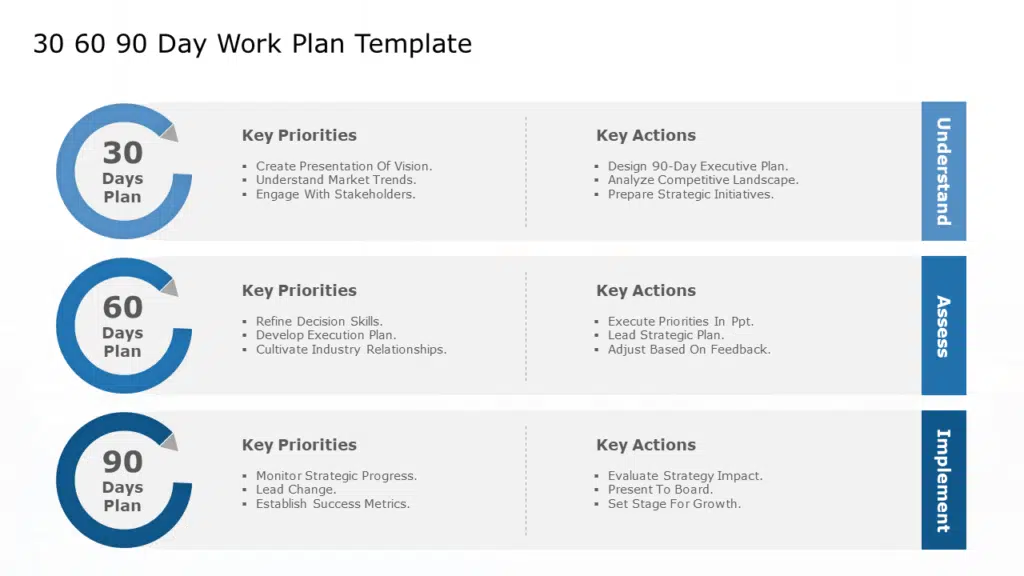
Additionally, the 30-60-90-Day Plan PowerPoint Template employs a straightforward goal-setting framework, facilitating the articulation of priorities and tracking progress across different objectives.
Tips For Creating The Best Work Plan Templates
Identifying strategies and methods to support the main goals is vital for creating the best workplan templates to facilitate proper work planning. Here are some tips for you:
1. Proceed in reverse from the ultimate objective
Plan your tasks by hierarchizing primary efforts and working backward from the end aim. Developing the plan by repeatedly improving the strategy, goals, and underlying techniques is possible. Consider multiple factors to create an outline. The procedure should begin with the inclusion of the primary goals and a concise checklist.
2. Set objectives with quantifiable outcomes
After you finish the project outline, it is critical to include specific, achievable deliverables in the action plan. Monitor the advancement of deliverables through milestones in a framework focused on outcomes. It helps create a timeline that will help you determine what needs to happen and when.
3. Develop relevant and attainable goals
A solid plan will frequently branch out from strategy to aim. For instance, a limited number of strategies, each with one or a few objectives, may support a single goal. Objectives frequently include a variety of methods that you should use to create the specific tasks completed in a reasonable amount of time.
The more detailed tactical strategy will be straightforward to follow. Divide the tasks into smaller tasks corresponding to discrete work units producing distinct deliverables. Monitoring the project’s progress with the predetermined deliverables is crucial.
4. Define roles and duties
One of the most essential parts of the work plan template is assigning duties and specific tasks to the identified stakeholders. In this manner, everyone on the team can work by the vision. The completed work plan is a living document with a complete list of all necessary actions, deliverables, and due dates.
After the project starts, monitoring performance and regularly revisiting the goals outlined in the tactical plan is critical. On a step-by-step worksheet, you can observe incremental developments regarding objective metrics.
Conclusion
For a project to succeed, work planning is crucial. Without it, your productivity and efficiency at work would be at risk since you’ll keep running into bottlenecks. Fortunately, making a work plan is relatively easy. All you have to do is do the actions we have already outlined. However, remember to use project planning software, which helps you collaborate with the project team and monitor progress while providing you with a visual overview of all the work involved.
SlideUpLift offers some outstanding PowerPoint Templates for you to start with. It assists with resource inventory and calendar creation so that you may make precise work plans, in addition to project planning, tracking, and team management.
FAQs
-
Can I use work plan templates for personal tasks?
Yes, it can be adapted for personal use to organize tasks and manage time more efficiently.
-
How often should a work plan be updated?
It should be regularly reviewed and updated as needed, especially when there are changes in project scope, timelines, or resources.
-
What distinguishes a work plan from a project plan?
It outlines tasks, timelines, and resources for achieving specific goals, while a project plan encompasses the entire project lifecycle, including scope, budget, and risk management.
-
How detailed should a work plan be?
The level of detail depends on the project’s complexity and stakeholders’ preferences. It should strike a balance between providing sufficient guidance and avoiding unnecessary micromanagement.
-
How do I ensure accountability within a team when using a work plan?
Establish clear roles and responsibilities, track progress regularly, provide feedback, and encourage open communication to foster accountability and ownership among team members.






